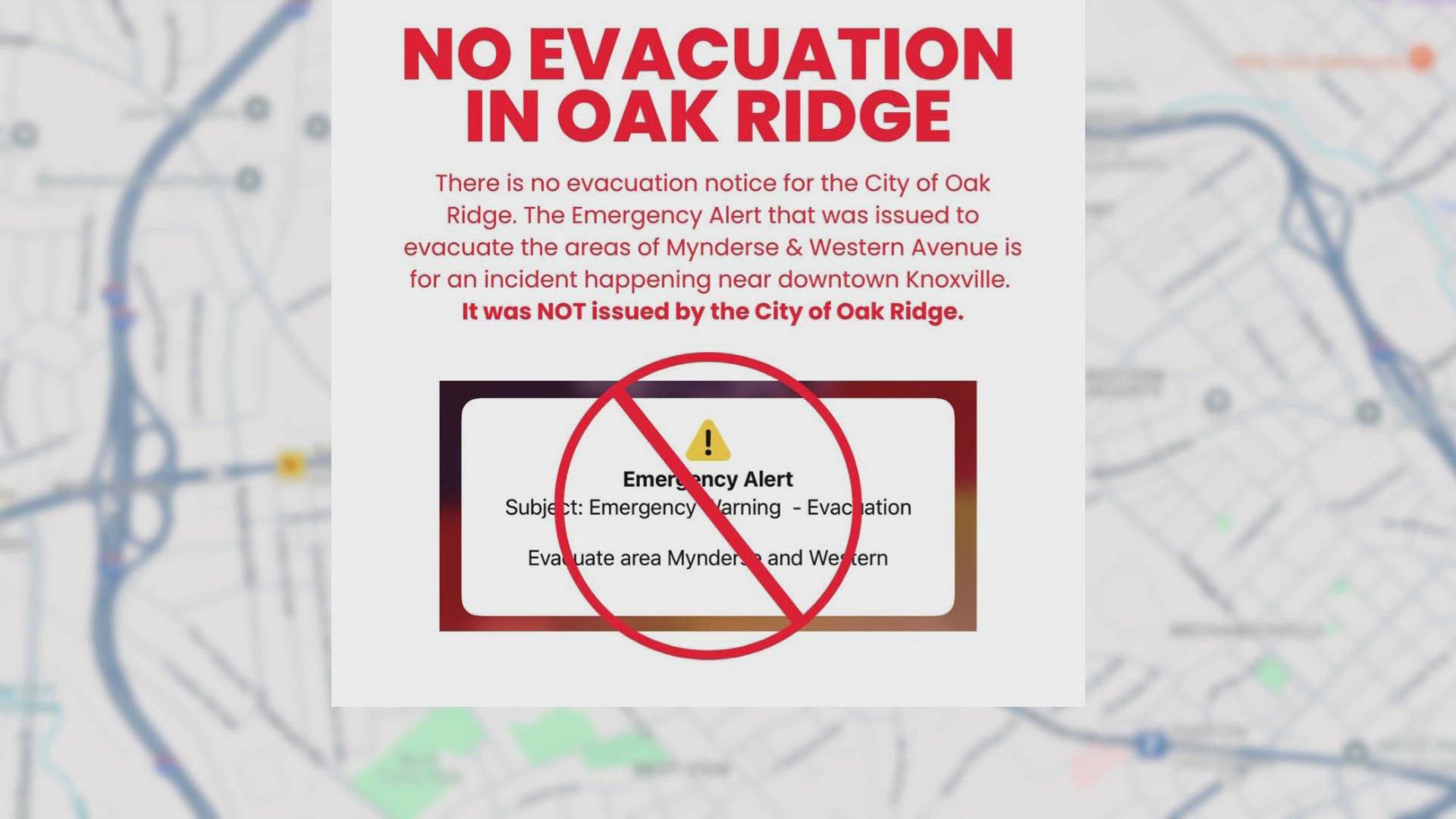KNOXVILLE, Tenn. — Tens of thousands of people across Knoxville and beyond received an emergency alert on their phones on Thursday afternoon telling them to evacuate the area of Mynderse Avenue and Western Avenue.
The evacuation alert was issued out of "an abundance of caution" after Knoxville fire crews, police and a bomb squad responded to a box containing possible explosives at CMC Recycling on Mynderse Avenue, which was in the Lonsdale area.
The evacuation area was in a roughly half-mile radius around the steel recycling facility. Police said they don't suspect any malicious intent behind the box, but said the situation would likely take hours to safely resolve.
Many of the people who received the phone alert on Thursday were miles outside the evacuation area. Some people in Oak Ridge even received it, prompting the city to issue a statement clarifying there was no evacuation notice for Oak Ridge.
The alert also contained few details about what was happening other than the text seen below:


Federal agencies have said these problems are largely due to lingering limitations with smartphone technology and how the national cellular alert system operates.
The Integrated Public Alert and Warning System, or IPAWS, is run by FEMA and allows local, state and federal authorities to send emergency alerts to devices in an affected area for things that require immediate public attention. That can include things like Amber Alerts, Blue Alerts, and other public safety alerts.
When it comes to targeting who receives the phone alerts, the IPAWS system relies primarily on the physical location of communication towers in the area to determine that. Agencies send the alerts out to specific cell towers in the affected area, so if you are in range of a cell tower when it receives an alert -- your phone will also receive it unless you have emergency alerts turned off in your settings.
"Mobile phones tens of miles outside of the targeted alert polygon area could receive the alert. The amount of overreach can vary, depending on such factors as terrain and tower location. Additionally, consumers who have disabled location-based services for their phone could continue to receive alerts tens of miles from the targeted alert area even if they have a newer phone," FEMA said.
IPAWS was upgraded in 2019 to allow enhanced alerts and geo-targeting within a tenth of a mile in the alert zone, but FEMA said most phones still don't fully support these new features.
The upgrade also allows for longer alerts up to 360 characters to give people more details, but many phones still do not support the expanded alerts and can only receive 90 characters. FEMA said it is considering making 360 characters the standard in the future once most people have newer phones with the capability to ensure "the maximum number of people get an alert."

